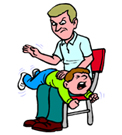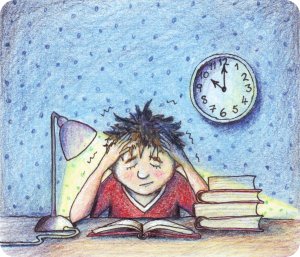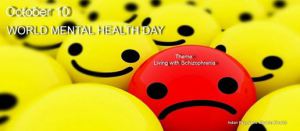Emotional stress and heart disease
Psychosocial stress is a constraining force or influence to which one is exposed to every day in life. Stress is a normal part of life and is unavoidable. But the response differs between each individual. Things that are stressful for some can be pleasurable for others or have little significance, the classic example being a roller coaster ride. Some find it a torture while thrill -seekers relish the ride. But the right amount of stress motivates us to be alert and focused.Indeed, it’s the individual rather than the stress that is the real problem. People with type A personality (Time sensitive, competitive, impatient, chronic sense of urgency, a tendency towards hostility and anger) are at high risk than people with type B personality (low key, non-competitive, time – insensitive). In other words, given the same stressful situation some will respond with frustration and anger while others will respond in a more even – tempered way.
A heart attack caused by coronary artery disease is the commonest cause of death worldwide.It involves a reduction of blood flow to the heart muscle due to the deposition of fat (plaque) in the arteries that supply blood to heart. Sudden disruption of the covering layer of the fat deposit leads to the formation of a blood clot which could cause the total blockage of the artery, which leads to a heart attack. The exact cause of the original fatty deposition is unknown.
But risk factors like:
- Hypertension,
- Hyperlipidemia,
- Diabetes mellitus,
- Smoking,
Physical inactivity increases the chance of such an event. In addition, psychosocial factors, predominantly depression and emotional stress, account for considerable risk. Although this has been known for more than a century, scientific data supporting the mechanism and therapeutic options have started to emerge only in the recent years. Stress has become part and parcel of modern life. Common responses to stress includes body
aches, impatience, decreased sleep, decreased energy level, feeling of anxiety, anger and depression. Sudden and severe stress can cause a heart attack, a condition known as ‘broken heart syndrome’ which is more common in women. Such episodes increase significantly following natural disasters like hurricane, earth quake and tsunami. On the other hand, long term stress, both in early life (childhood sexual abuse, parental substance abuse, poor socio-
economic status) and adulthood (marital discord, social isolation or loneliness) has been associated with a 40–60% excess risk of heart disease. Exposure to workplace stress or “job strain” ( high job demands, long hours of work or poor control of conditions like high blood pressure) is related to a 40% excess risk of heart disease.
In the recent years, the mechanisms of stress that lead to heart disease are better understood. For instance, heightened activity in one part of the brain (the amygdala) can lead to over production of white blood cells from bone marrow. which leads to inflammation and plaque formation in arteries. Similarly, stress increases the tendency of blood to clot. Stress also leads to release of chemicals which elevate blood pressure and blood sugar. Stressed
individuals tend to exhibit maladaptive behavior including excessive smoking, over eating, drinking too much alcohol and doing little exercise.
Emerging evidence supports the notion of counteracting stress as a critical component in the prevention and of treatment of heart disease along with the other conventional risk factors. A positive attitude and well-developed self-esteem are good defenses against stress because they help you view stress as a challenge rather than as a problem. Relaxation of the mind is an important strategy. Relaxation is an active process, that could be achieved by deep breathing, listening to music, reading a book, meditation, swimming or structured programs like Yoga. Yoga is associated with physical postures (‘Asana’), breath control (‘Pranayama’), and meditation (‘Dhyana’), all of which have been shown to reduce the negative effects of stress and improve health. The best form of relaxation, of course, is doing something that brings you joy. Once you identify what this activity is, practice relaxation through this for at
least 30 minutes a day. And don’t forget exercise – it helps in reducing stress along with burning calories. Adequate and good quality sleep is important. Finally, in selected individuals, professional counselling may help reduce stress.
Dr.K.G.Sundar Kumar,
MBBS, MD (Internal Medicine),
DM (Cardiology),
Fellowship in Interventional Cardiology (France)
Consultant Interventional Cardiologist
to know more about doctor and for booking appointment visit https://www.imh.ae/departments/cardiology/
Call : +971 4 406 3000 / 02


 autism are not disabled, they just think differently with multiple abilities.According to the history of human evolution, it is likely our ancestors would have had autism without been noticed. Latest research concludes autism has a long evolutionary history. Incidence and prevalence of autism has dramatically increased over the past few years.
autism are not disabled, they just think differently with multiple abilities.According to the history of human evolution, it is likely our ancestors would have had autism without been noticed. Latest research concludes autism has a long evolutionary history. Incidence and prevalence of autism has dramatically increased over the past few years. The incorporation of their gifted skills into a community would play a vital role in the development of specialists in our community. A study done in 2005 about an elderly reindeer herder from Siberia revealed a detailed memory of the parentage, medical history and character of each one of his 2,600 animals.
The incorporation of their gifted skills into a community would play a vital role in the development of specialists in our community. A study done in 2005 about an elderly reindeer herder from Siberia revealed a detailed memory of the parentage, medical history and character of each one of his 2,600 animals. The right environment for people with autism for making sophisticated contributions to the society is the need of the hour. In many instances, people with autism need opportunities and support more than they need treatment.
The right environment for people with autism for making sophisticated contributions to the society is the need of the hour. In many instances, people with autism need opportunities and support more than they need treatment.


 Attention deficit / hyperactivity disorder (ADHD) is a highly prevalent condition in children that has generated considerable public interest and debate. It is a chronic, pervasive childhood disorder characterized by developmentally inappropriate activity level, low frustration tolerance, impulsivity, poor organization of behavior, distractibility, and inability to sustain attention and concentration (American Psychiatric Association, 2000)which occurs in 3% to 7% of school-age children (Egger et al., 2000).
Attention deficit / hyperactivity disorder (ADHD) is a highly prevalent condition in children that has generated considerable public interest and debate. It is a chronic, pervasive childhood disorder characterized by developmentally inappropriate activity level, low frustration tolerance, impulsivity, poor organization of behavior, distractibility, and inability to sustain attention and concentration (American Psychiatric Association, 2000)which occurs in 3% to 7% of school-age children (Egger et al., 2000). The right prefrontal cortex, vermis region of the cerebellum, caudate nucleus, and the globus pallidus are significantly smaller in children with ADHD than the normal children. Parents of children with ADHD are often noted to be experiencing mental difficulties, high levels of stress, and conflict- laden parent – child interactions. Non-genetic factors that are known to be linked to ADHD include premature birth, maternal alcohol and tobacco use, complications during pregnancy or birth and illnesses of early infancy, exposure to high levels of lead in early childhood, brain injuries that involve prefrontal cortex, overstimulation hypothesis, and metabolic dysfunction of the central nervous system.
The right prefrontal cortex, vermis region of the cerebellum, caudate nucleus, and the globus pallidus are significantly smaller in children with ADHD than the normal children. Parents of children with ADHD are often noted to be experiencing mental difficulties, high levels of stress, and conflict- laden parent – child interactions. Non-genetic factors that are known to be linked to ADHD include premature birth, maternal alcohol and tobacco use, complications during pregnancy or birth and illnesses of early infancy, exposure to high levels of lead in early childhood, brain injuries that involve prefrontal cortex, overstimulation hypothesis, and metabolic dysfunction of the central nervous system. Evidence based treatments for ADHD include behavioral interventions such as parent behavior management training, contingency management, and cognitive- behavior therapies, administered individually or in group settings, or pharmacologic treatment, with a variety of stimulant formulations and the non-stimulant atomoxetine approved for this indication. For many patients, the optimal treatment is multimodal, meaning the combination of medication and psychosocial treatments addressing all the impaired areas of life.
Evidence based treatments for ADHD include behavioral interventions such as parent behavior management training, contingency management, and cognitive- behavior therapies, administered individually or in group settings, or pharmacologic treatment, with a variety of stimulant formulations and the non-stimulant atomoxetine approved for this indication. For many patients, the optimal treatment is multimodal, meaning the combination of medication and psychosocial treatments addressing all the impaired areas of life.
 sees around him/her. Use rhymes such as jonny jonny yes papa. Encourage the child to say hahahahaa/aaaaaa with you. Associate the object with sound e,g introduce the clock to the child, t-t-t-t-t clock, ding- dong- ding-dong .pi pi pi pi daddy car. Make him listen to the sounds of objects and create a sound associated with the object. mow mow mow mow cow. Use the sound like p-p-p-p-, m-m-m-m-, b-b-b-b-b, brooo-brooo, grrrr- ggrr while bathing, playing with toys, pampering him/her. These sounds will help him to learn better in preschool and kindergarten. Expand on words what the child says, for an example, if (s)he says car or sound likes car. Expand on words saying oh! yes it is a CAR, Biiig CAR, Big red CAR! Show the child big colorful picture book with large pictures. Name them, read aloud and talk about the picture. Wait your child to explore the picture, Ask him/her what is this and you answer. Make him/her point to picture Repeat the same several days. You would be surprised one day hearing(s)he names the picture.
sees around him/her. Use rhymes such as jonny jonny yes papa. Encourage the child to say hahahahaa/aaaaaa with you. Associate the object with sound e,g introduce the clock to the child, t-t-t-t-t clock, ding- dong- ding-dong .pi pi pi pi daddy car. Make him listen to the sounds of objects and create a sound associated with the object. mow mow mow mow cow. Use the sound like p-p-p-p-, m-m-m-m-, b-b-b-b-b, brooo-brooo, grrrr- ggrr while bathing, playing with toys, pampering him/her. These sounds will help him to learn better in preschool and kindergarten. Expand on words what the child says, for an example, if (s)he says car or sound likes car. Expand on words saying oh! yes it is a CAR, Biiig CAR, Big red CAR! Show the child big colorful picture book with large pictures. Name them, read aloud and talk about the picture. Wait your child to explore the picture, Ask him/her what is this and you answer. Make him/her point to picture Repeat the same several days. You would be surprised one day hearing(s)he names the picture.
 Subsequently, this often results in chronic depression, poor scholastic performance, psycho-social problems, substance abuse and even suicide. It’s equally prevalent in both sexes during pre-puberty stage whereas more in females with a ratio of 2:1 post-puberty. Mean duration of an episode of depression is 7 to 9 months. 70 to 80 % recover at the end of one year. Increased chance of recurrence is seen in children with early onset and those with the history of previous episodes, co-morbid psychotic symptoms, poor drug compliance, negative life events and positive family history in parents. 20 to 30 % of depressive children develop manic episodes (Bipolar Disorder) on follow up.
Subsequently, this often results in chronic depression, poor scholastic performance, psycho-social problems, substance abuse and even suicide. It’s equally prevalent in both sexes during pre-puberty stage whereas more in females with a ratio of 2:1 post-puberty. Mean duration of an episode of depression is 7 to 9 months. 70 to 80 % recover at the end of one year. Increased chance of recurrence is seen in children with early onset and those with the history of previous episodes, co-morbid psychotic symptoms, poor drug compliance, negative life events and positive family history in parents. 20 to 30 % of depressive children develop manic episodes (Bipolar Disorder) on follow up. Few predisposing factors/ vulnerability factors are: Genetic; biological factors (neurotransmitters -monoamine metabolism and endocrine abnormalities); and temperament (e.g. quiet children with regular habits and slow to adapt to new experiences). Chronic life adversities are also likely to contribute to develop depression – broken homes, parental alcoholism, abuse, rejection etc. Undesirable life events in previous 12 months are important e.g., an event at home, or school and experience of loss.
Few predisposing factors/ vulnerability factors are: Genetic; biological factors (neurotransmitters -monoamine metabolism and endocrine abnormalities); and temperament (e.g. quiet children with regular habits and slow to adapt to new experiences). Chronic life adversities are also likely to contribute to develop depression – broken homes, parental alcoholism, abuse, rejection etc. Undesirable life events in previous 12 months are important e.g., an event at home, or school and experience of loss. disability by obtaining the history from all available sources; to explore into the stressors in the school/home; to consider differential diagnosis – Physical conditions like hypothyroidism; psychosis; normal reactive feelings of sadness and unhappiness; look for co morbid condition.
disability by obtaining the history from all available sources; to explore into the stressors in the school/home; to consider differential diagnosis – Physical conditions like hypothyroidism; psychosis; normal reactive feelings of sadness and unhappiness; look for co morbid condition.

 They can’t control their negative thoughts and don’t believe people who tell them that they look fine. Their thoughts may cause severe emotional distress and interfere with their daily functioning. They may miss work or school, avoid social situations and isolate themselves, even from family and friends, because they fear others will notice their flaws.
They can’t control their negative thoughts and don’t believe people who tell them that they look fine. Their thoughts may cause severe emotional distress and interfere with their daily functioning. They may miss work or school, avoid social situations and isolate themselves, even from family and friends, because they fear others will notice their flaws.




 The Convention on the Rights of Persons with Disabilities (CRPD) recognises that the existence of barriers constitutes a central component of disability.
The Convention on the Rights of Persons with Disabilities (CRPD) recognises that the existence of barriers constitutes a central component of disability.




 Sleep follows a pattern of alternating REM (rapid eye movement) and NREM (non-rapid eye movement) sleep throughout a typical night in a cycle that repeats itself about every 90 minutes. NREM (75% of night): As we begin to fall asleep, we enter NREM sleep, which is composed of stages 1-4. REM (25% of night).
Sleep follows a pattern of alternating REM (rapid eye movement) and NREM (non-rapid eye movement) sleep throughout a typical night in a cycle that repeats itself about every 90 minutes. NREM (75% of night): As we begin to fall asleep, we enter NREM sleep, which is composed of stages 1-4. REM (25% of night). Persons get irritable and exhausted, easily distracted and often don’t make sound decisions. Sleep deprivation negatively impacts the immune system, may also lead to weight gain, high blood pressure, cancer, heart disease, stroke, diabetes, bone loss and depression Sleep deprivation may also impair learning, memory, alertness, concentration, judgment, problem solving and reasoning, as well as increase your risk of accidents.
Persons get irritable and exhausted, easily distracted and often don’t make sound decisions. Sleep deprivation negatively impacts the immune system, may also lead to weight gain, high blood pressure, cancer, heart disease, stroke, diabetes, bone loss and depression Sleep deprivation may also impair learning, memory, alertness, concentration, judgment, problem solving and reasoning, as well as increase your risk of accidents.
 Drug safety ( Pharmacovigilance) – The science and activities relating to the detection, evaluation, understanding and prevention of adverse drug reactions or any other drug-related problems.
Drug safety ( Pharmacovigilance) – The science and activities relating to the detection, evaluation, understanding and prevention of adverse drug reactions or any other drug-related problems.



 Myth #1: Mental illnesses aren’t real illnesses.
Myth #1: Mental illnesses aren’t real illnesses. Myth #2: Mental illnesses will never affect me.
Myth #2: Mental illnesses will never affect me. Myth #3: Mental illnesses are just an excuse for poor behavior.
Myth #3: Mental illnesses are just an excuse for poor behavior. Myth #4: Bad parenting causes mental illnesses.
Myth #4: Bad parenting causes mental illnesses. Myth #5: People with mental illnesses are violent and dangerous.
Myth #5: People with mental illnesses are violent and dangerous. Myth #6: People don’t recover from mental illnesses and should be kept in hospital for life.
Myth #6: People don’t recover from mental illnesses and should be kept in hospital for life. Myth #7: People who experience mental illnesses are weak and can’t handle stress.
Myth #7: People who experience mental illnesses are weak and can’t handle stress. Myth #8: People who experience mental illnesses can’t work.
Myth #8: People who experience mental illnesses can’t work. Myth #9: Kids can’t have a mental illness like depression. Those are adult problems.
Myth #9: Kids can’t have a mental illness like depression. Those are adult problems. Myth #10: Everyone gets depressed as they grow older. It’s just part of the aging process.
Myth #10: Everyone gets depressed as they grow older. It’s just part of the aging process. Raising kids is one of the toughest and most fulfilling jobs in the world and we are least prepared for that. Children’s physical and emotional status, as well as their social and cognitive development, greatly depends on their family dynamics. The rising incidence of behavioural problems among children could suggest that some families are struggling to cope with the increasing stresses they are experiencing.
Raising kids is one of the toughest and most fulfilling jobs in the world and we are least prepared for that. Children’s physical and emotional status, as well as their social and cognitive development, greatly depends on their family dynamics. The rising incidence of behavioural problems among children could suggest that some families are struggling to cope with the increasing stresses they are experiencing.


 Alzheimer’s disease is an irreversible, progressive brain disorder that slowly destroys memory and thinking skills, and eventually the ability to carry out the simplest tasks. Alzheimer’s is a type of dementia that causes problems with memory, thinking and behavior. Symptoms usually develop slowly and get worse over time, becoming severe enough to interfere with daily tasks.
Alzheimer’s disease is an irreversible, progressive brain disorder that slowly destroys memory and thinking skills, and eventually the ability to carry out the simplest tasks. Alzheimer’s is a type of dementia that causes problems with memory, thinking and behavior. Symptoms usually develop slowly and get worse over time, becoming severe enough to interfere with daily tasks. People with memory loss or other possible signs of Alzheimer’s may find it hard to recognize they have a problem. Signs of dementia may be more obvious to family members or friends. Anyone experiencing dementia-like symptoms should see a doctor as soon as possible. At International Modern Hospital, we offer specialised care for such patients under the guidance of our psychiatrist,
People with memory loss or other possible signs of Alzheimer’s may find it hard to recognize they have a problem. Signs of dementia may be more obvious to family members or friends. Anyone experiencing dementia-like symptoms should see a doctor as soon as possible. At International Modern Hospital, we offer specialised care for such patients under the guidance of our psychiatrist, 
 Plaques are deposits of a protein fragment called beta-amyloid (BAY-tuh AM-uh-loyd) that build up in the spaces between nerve cells.
Plaques are deposits of a protein fragment called beta-amyloid (BAY-tuh AM-uh-loyd) that build up in the spaces between nerve cells.

 The World Health Organization estimates that over 800,000 people die by suicide each year – that’s one person every 40 seconds. Up to 25 times as many again make a suicide attempt. There are many, many more people who have been bereaved by suicide or have been close to someone who has tried to take his or her own life. ‘Connect, communicate, care’ is the theme of the 2016 World Suicide Prevention Day. These three words are at the heart of suicide prevention.
The World Health Organization estimates that over 800,000 people die by suicide each year – that’s one person every 40 seconds. Up to 25 times as many again make a suicide attempt. There are many, many more people who have been bereaved by suicide or have been close to someone who has tried to take his or her own life. ‘Connect, communicate, care’ is the theme of the 2016 World Suicide Prevention Day. These three words are at the heart of suicide prevention. Social connectedness reduces the risk of suicide, so being there for someone who has become disconnected can be a life-saving act. Connecting them with formal and informal supports may also help to prevent suicide. Individuals, organisations and communities all have a responsibility here.
Social connectedness reduces the risk of suicide, so being there for someone who has become disconnected can be a life-saving act. Connecting them with formal and informal supports may also help to prevent suicide. Individuals, organisations and communities all have a responsibility here. Open communication is vital if we are to combat suicide. We need to discuss suicide as we would any other public health issue if we are to dispel myths about it and reduce the stigma surrounding it. Equipping people to communicate effectively with those who might be vulnerable to suicide is an important part of any suicide prevention strategy. Showing compassion and empathy, and listening in a non-judgemental way is very important.
Open communication is vital if we are to combat suicide. We need to discuss suicide as we would any other public health issue if we are to dispel myths about it and reduce the stigma surrounding it. Equipping people to communicate effectively with those who might be vulnerable to suicide is an important part of any suicide prevention strategy. Showing compassion and empathy, and listening in a non-judgemental way is very important. All the connecting and communicating in the world will have no effect without care. We need to ensure that we are caring ourselves. We need to look out for others who may be struggling, and let them tell their story in their own way and at their own pace.
All the connecting and communicating in the world will have no effect without care. We need to ensure that we are caring ourselves. We need to look out for others who may be struggling, and let them tell their story in their own way and at their own pace.

 Children are not immune to forces that have driven many adults toward healthy lifestyles and spa and wellness therapies. They too are living in an electronic-gadget-obsessed world, crouching over devices, as they’re fed information and images at incredible speed. Children spend more time than ever hunched over glowing screens.
Children are not immune to forces that have driven many adults toward healthy lifestyles and spa and wellness therapies. They too are living in an electronic-gadget-obsessed world, crouching over devices, as they’re fed information and images at incredible speed. Children spend more time than ever hunched over glowing screens. Anorexia Nervosa is a psychological and possibly life-threatening eating disorder defined by an extremely low body weight relative to stature (this is called BMI [Body Mass Index] and is a function of an individual’s height and weight), extreme and needless weight loss, illogical fear of weight gain, and distorted perception of self-image and body.
Anorexia Nervosa is a psychological and possibly life-threatening eating disorder defined by an extremely low body weight relative to stature (this is called BMI [Body Mass Index] and is a function of an individual’s height and weight), extreme and needless weight loss, illogical fear of weight gain, and distorted perception of self-image and body.








